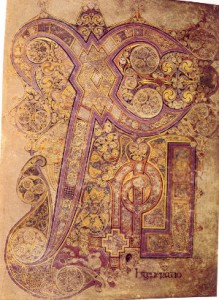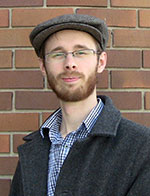 “In the beginning was the Word,” we read, “and the Word was with God, and the Word was God” (John 1:1).
“In the beginning was the Word,” we read, “and the Word was with God, and the Word was God” (John 1:1).
We know the verse, but too often we read it too quickly. Too often, I say, because this is a weighty sentence, a sentence requiring more than a moment’s pause. The Word was God. God was the Word. And that Word, we continue to read, “became flesh” (John 1:14).
But exactly what kind of word is this Word?
An answer comes in Moses’ encounter with God at the burning bush. Moses asks, “Suppose I go to the Israelites and say to them, ‘The God of your fathers has sent me to you,’ and they ask me, ‘What is his name?’ Then what shall I tell them?” (Exodus 3:13).
God responds with this Great Word, the simple and unfathomable declaration: “I Am.”
“I Am,” God says. “I Am That I Am” (Exodus 3:14).
He is also the God of Abraham, Isaac, and Jacob—the God of the Israelites’ fathers, as the passage explain. But this is God defining Himself in relation to His creation—explaining Himself so that Moses can understand his own relationship to Him. But on His own, He is simply “I Am.” He is. He exists. He will always be.
This God, this I Am, is He who exists independently of all other things. God is not a contingent being, to borrow St. Anselm’s phraseology; He is a necessary being. That is to say, He does not rely on anything else in order to continue existing. God simply is. He is before the world was created. He is when the world will be destroyed.
God simply is. He is before the world was created. He is when the world will be destroyed.
What is more, without Him, nothing else could exist. His own existence is what makes possible the existence of other things. “For in Him we live and move and have our being,” Paul quotes the Greek poets (Acts 17:28; cf. 17:24). God is He who holds the whole of creation together.
And it is this great, uncreated, all-sustaining I Am who is the Word of John’s Gospel—“The Word who became flesh and made his dwelling among us” (John 1:14). Yes, the infant boy born to Mary is the same God “through whom all things were made and without whom nothing was made that has been made” (John 1:3).
The Word becomes flesh. The necessary God becomes contingent human, marrying forever human nature and divinity in his Person. Intangible deity becomes tangible man.
In Christ, the unknowable “I am” comes close and speaks to us. “I am the Bread of Life,” the Word says. “I am the Light of the World. I am the Gate. I am the Good Shepherd. I am the Resurrection and the Life. I am the Way, the Truth, and the Life. I am the Vine.” In the seven “I Am” statements of John’s Gospel, Jesus declares to us who He is in terms that reveal our relationship to Him.
Yes, He is the great I Am, God of all, immortal, incomprehensible. But He wants us to understand—just as the great I Am wanted Moses to understand—that He is a God who exists in relationship with His creation. In Christ, we see the “image of the invisible God” (Colossians 1:15). He is not a mystery—a question without an answer. He is the Word of God made manifest to us. In Christ, the immortal comes down and pitches His tent among us. He in whom we find our life chooses to live with us—and die for us—so that we might at last live with Him.
——————–


